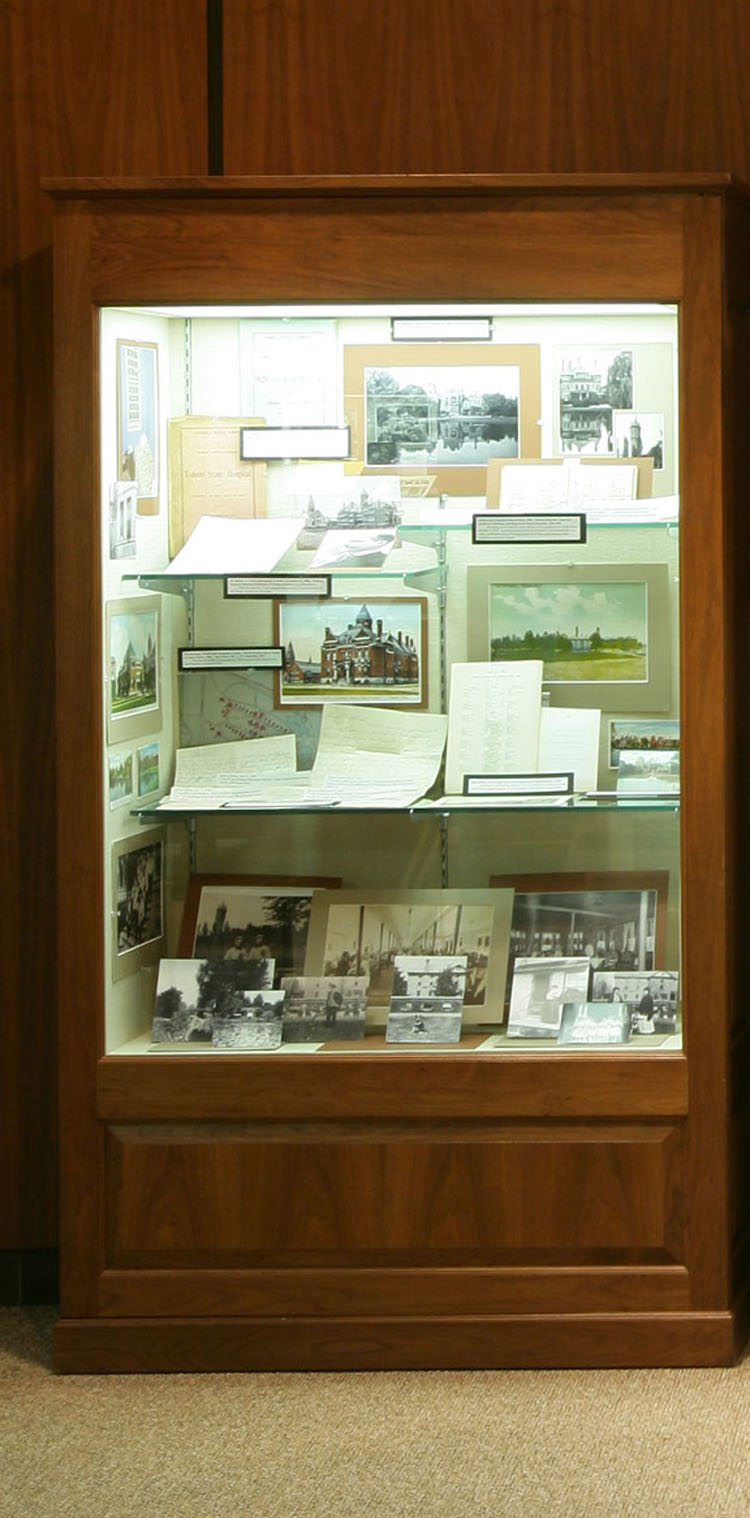
Attics, Almshouses, and Asylums—Care for People with Mental Illness.
In colonial America, mental illness was believed to be caused by demonic possession, witchcraft, or sinful behavior, and was considered something to be punished. The mentally ill were chained in attics, almshouses, and jails, or roamed the streets and survived as best they could. Living conditions were appalling, and medical care non-existent. “Treatment” included blood-letting, purgatives, and restraints.
At the beginning of the 19th century, “moral treatment” of the mentally ill became accepted. It advocated using sympathy and kindness in a healthy environment away from family, stress, and modern society. Investigations into the care of the mentally ill by Dorothea Dix in the 1840s helped to spur the building by states of mental health asylums according to the principles of moral treatment. But because few other facilities existed to deal with social problems, these hospitals became overcrowded, often caring for people with other disabilities. Conditions deteriorated, and using physical restraints to subdue patients returned as a way to deal with overcrowding.
In Toledo, early care of the mentally ill fell to the Lucas County Poor Farm, later renamed the County Infirmary. In exchange for care, those who were able to were required to work on the farm. Many mentally ill remained in the county jail. In 1861, the county built its first asylum on the grounds of the Poor Farm, but it was soon overcrowded. As a result, the Northwestern Hospital for the Insane was completed in 1871, and it continued to exist until sometime between 1887 and 1890.
By 1883, severe overcrowding in Ohio’s existing mental hospitals necessitated building an additional state asylum, and Toledo was selected as the site. The new hospital was built using the “cottage system,” with smaller family-like homes rather than large wards. The buildings were designed by prominent Toledo architect Edward O. Fallis, who designed several other important Toledo buildings. Each cottage had a different design, and deliberate effort was made to eliminate any prison-like appearance.
The asylum (later named the Toledo State Hospital) opened in January 1888, with Dr. Henry A. Tobey serving as superintendent. Tobey believed that meaningful employment, diversion, recreation, and privileges were the best methods for restoring the “mentally disturbed.” Physical restraints were rarely used. Among the causes of insanity noted in patient records were syphilis, dementia, alcoholism, religious excitement, marriage, sexual self abuse, and seduction.
Within ten years, the Toledo State Hospital’s facilities included a greenhouse, two hospital buildings, an auditorium, a slaughterhouse, and a two-acre lake. Patients raised their own food. By 1905, the hospital formed what was called “the best baseball team in Northwestern Ohio.” But the number of patients at the hospital increased, and the quality of care decreased. By the 1930s, the number of patients swelled to over 2700, far beyond its capacity, and climbed to over 3000 in the 1950s. Treatment at the time consisted of tranquilizers and therapy sessions, and electric shock therapy was still used occasionally. In 1971, the hospital’s name was changed to the Toledo Mental Health Center, and during the next 20 years the number of patients it treated dropped to around 300 as community care programs took over treatment. Today all of the original buildings of the old state hospital are gone, and all that remains of the Toledo State Hospital a few of the original lagoons and two cemeteries containing the graves of former Toledo State Hospital patients.